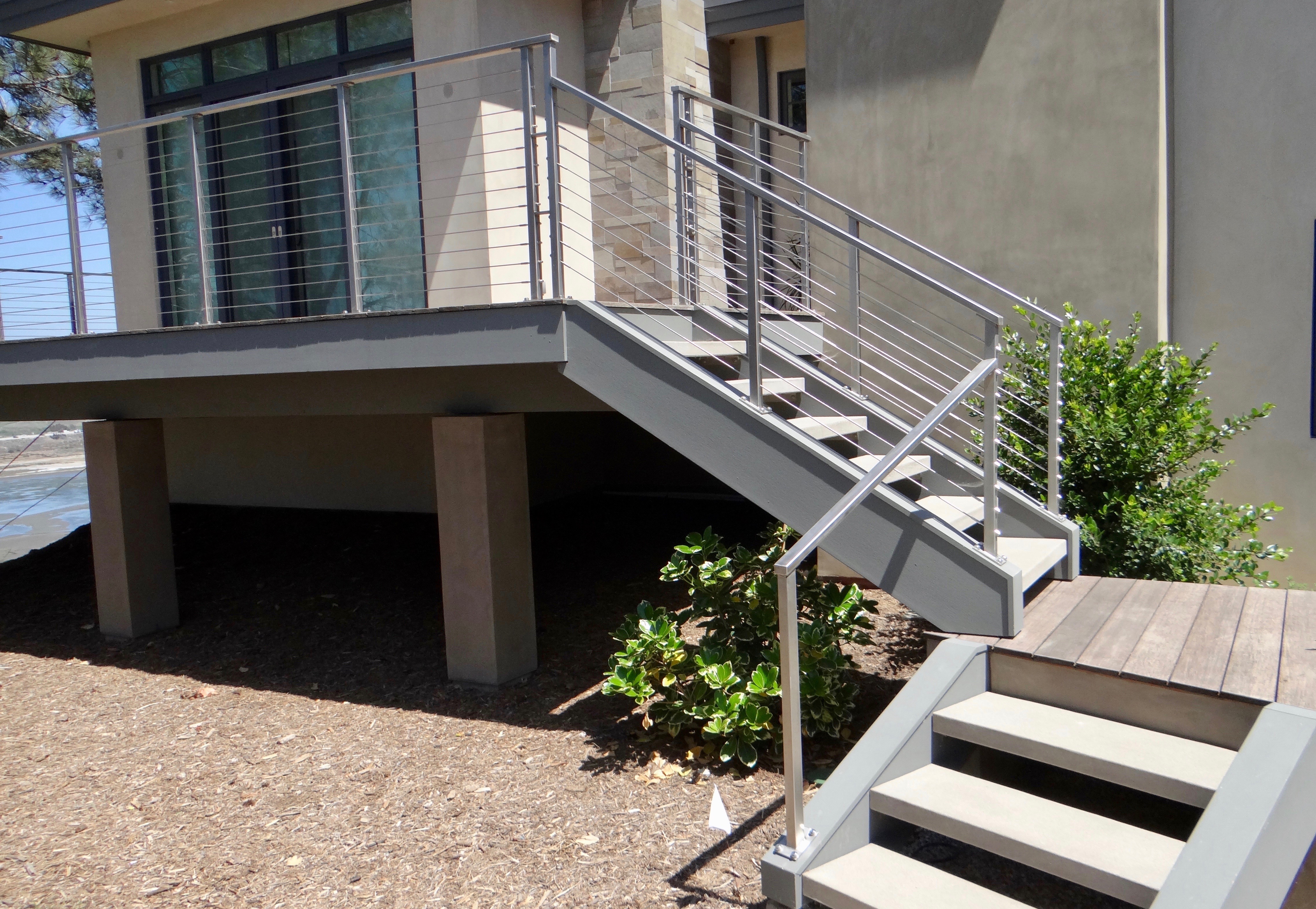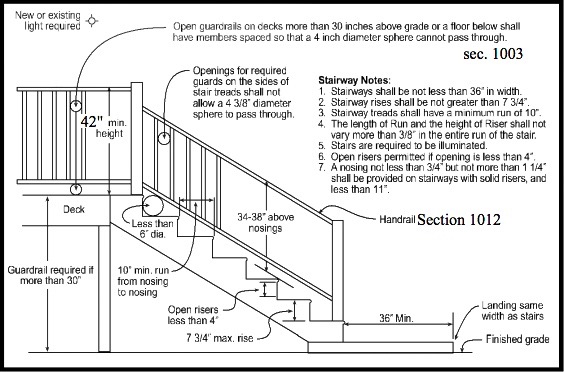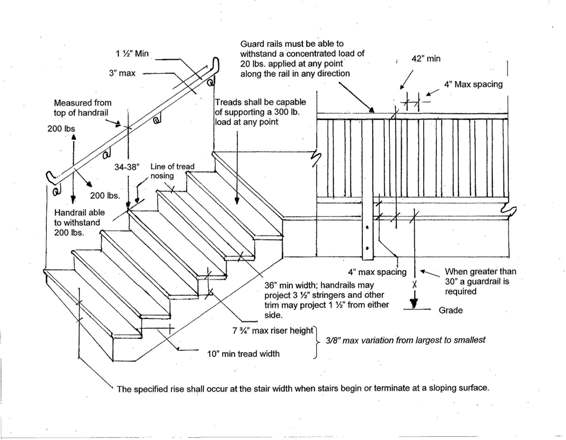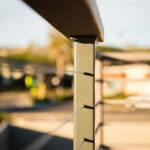
Every set of stairs is unique, from the rise and run to individual angles. When purchasing a stair railing system or components there are a few vital measurements needed for a proper installation. Additionally, some commonly used terminologies are needed for measuring stair railings, hand rails and balusters. Here are a few commonly used terms referring to stairs and their components:
- Tread- A tread is the top surface of a step
- Riser- The vertical member between stair treads
- Nosing- A nosing is the outer edge of a tread (ex. bullnose)
- Balusters, Pickets, or Spindles- These are terminologies used to rever to vertical members of the railing infill
- Step- The combination of riser and tread creates a “step”
- Landing- A landing is a platform used to break stair flights or land stair stringers
- Stringers- Angled stair supports used to support steps; they can be constructed of wood or steel
- Grab Rail- A graspable railing section separately used for support ; can be attached to a barrier railing or located on an opposing wall
This diagram references the code requirements for stair railings that are related to the terminology provided above. Note the call outs and dimensional requirements for “landings”, “risers”, “nosings” etc.
How to Measure Your Stairs for Cable Railings
Measuring for stair railings doesn’t need to be complicated. Here are the steps we recommend to our customers submitting requests for quotes. Including photos with your measurements is also very helpful to our estimators. Simple line drawings are also useful in determining stair cost.
Steps for Taking Stair Specs. :
- Measure the overall height of the stair set. This is the distance from the floor to the landing at the top of the stairs.
- Measure the overall length; this is the distance from the edge of the stair nose from the top stair/landing to the bottom stair nosing
- Calculate the depth of the finished tread by measuring the length of one tread from front to back
- Measure the height of a finished tread by calculating the height of a riser from a base tread to the tread on the stair above it
- Estimate the stair angle; this can be done in several ways by using the rise/run dimensions of individual stair treads or the overall rise/run. Using the information from these steps we can utilize one of many stair calculators online.
This diagram below shows a graspable railing section parallel to the angle that is created by the line of the stair nosings. By measuring directly up from the nose of the top and bottom stair we can easily find the line/angle for the grab rail.
Quotes for Cable Railings or Glass Panel Stair Railings
Cable and glass railing systems are awesome choices for stair railings and can be fabricated easily with standard measurements and photos. Please use the guidelines in this article for accurate measurements and practices regarding your stair railings.
San Diego Cable Railings provides a one stop location for fabrication and installation of stair railing systems. We have furnished hundreds of stair railing kits, as well as preferred installation of these railing kits. Quotes for stair railings are available in 24-48 hours and lead times for railing systems are typically 2-4 weeks. If you have questions about measuring stairs or angles for your railing system; give us a call at 844-277-7327 or visit the quote request page today.





